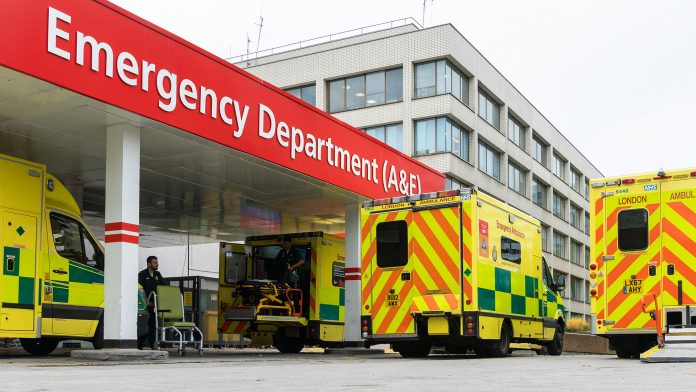
New data shows that NHS emergency care had the busiest October on record, with Type 1 attendances facing the busiest month so far this year.
NHS staff are managing record demand across emergency care ahead of winter. New data published today shows that Type 1 A&Es and ambulance services experienced their busiest month this year.
More than 2.2 million people attended A&Es in October (2,219,618), making it the busiest October on record. Last month was also the busiest month so far for Type 1 attendances (1,413,560) and the highest number of emergency admissions since January 2020 (547,586).
October was also the busiest month this year for category 1 and category 2 ambulance call outs. More than 840,000 calls to 999 were answered last month – the highest figure so far this year.
Professor Sir Stephen Powis, NHS National Medical Director, said: “Today’s figures are a stark reminder of the ongoing pressures the NHS is facing, particularly in emergency care with significant demand for ambulances and A&E, as we head into what we are expecting to be another challenging winter in the health service.
“Despite these ongoing pressures, including ten months of strikes, the NHS has made progress on its three recovery plans, and it is important to recognise the incredible efforts of staff who are seeing and treating many more people than pre-pandemic – delivering record numbers of diagnostic tests and checks, treating more people for cancer at an earlier stage, and completing thousands more routine procedures.”
Faster ambulance response times
Despite NHS emergency care experiencing higher demand, figures show that the most serious ambulance response times were more than one minute faster in October (8:40) compared with the same month last year.
Last month, category 2 response times were almost 20 minutes faster (41:40) compared with 1:01:19 in October 2022.
Reducing long waits for patients
Despite the pressure, NHS staff are reducing long waits for patients, with year-long waits down by 5,500 in September. Waits of more than 65 weeks have more than halved since June 2021, and waits of over one year are now down to 5% of the waiting list.
The NHS is publishing the number of individual patients on the waiting list for the first time (6.5 million). This is in addition to the total number of appointments and treatments on the waiting list (7.77 million).
Boosting NHS emergency care capacity before winter
Winter preparations have been well underway since the urgent and emergency care recovery plan was published this year. The NHS has introduced measures to boost resilience, including care centres to speed up discharge, additional ambulance hours, and extra beds.
The NHS has also launched its annual 111 campaign this week, with ads running across catch-up TV, radio, social media, and online until the end of March. The campaign aims to remind people to use NHS 111 services when they need urgent medical advice that is not life-threatening.
“The public can help play their part this winter by getting their flu and Covid-19 vaccinations when eligible, using services like NHS 111 to get urgent advice on the best NHS service for their needs without leaving the comfort of their homes, and by calling 999 in life-threatening emergencies,” continued Powis.
Increasing the number of virtual ward beds available
Last month, on each day, an average of 12,493 patients who were medically fit to be discharged spent more time in hospital than needed.
Delayed discharges put considerable pressure on the NHS, including the flow of patients from A&E through to the ward. This is why the health service has been working with local authorities on various initiatives to discharge more patients when they are medically fit to leave.
The NHS is also expanding the use of out-of-hospital care, including more virtual ward beds and acute respiratory infection hubs.
The data released today shows that the NHS is increasing the number of virtual ward beds available after meeting its ambition to roll out 10,000 beds by the end of September.
Now, there are 10,737 virtual ward beds across the country.

























